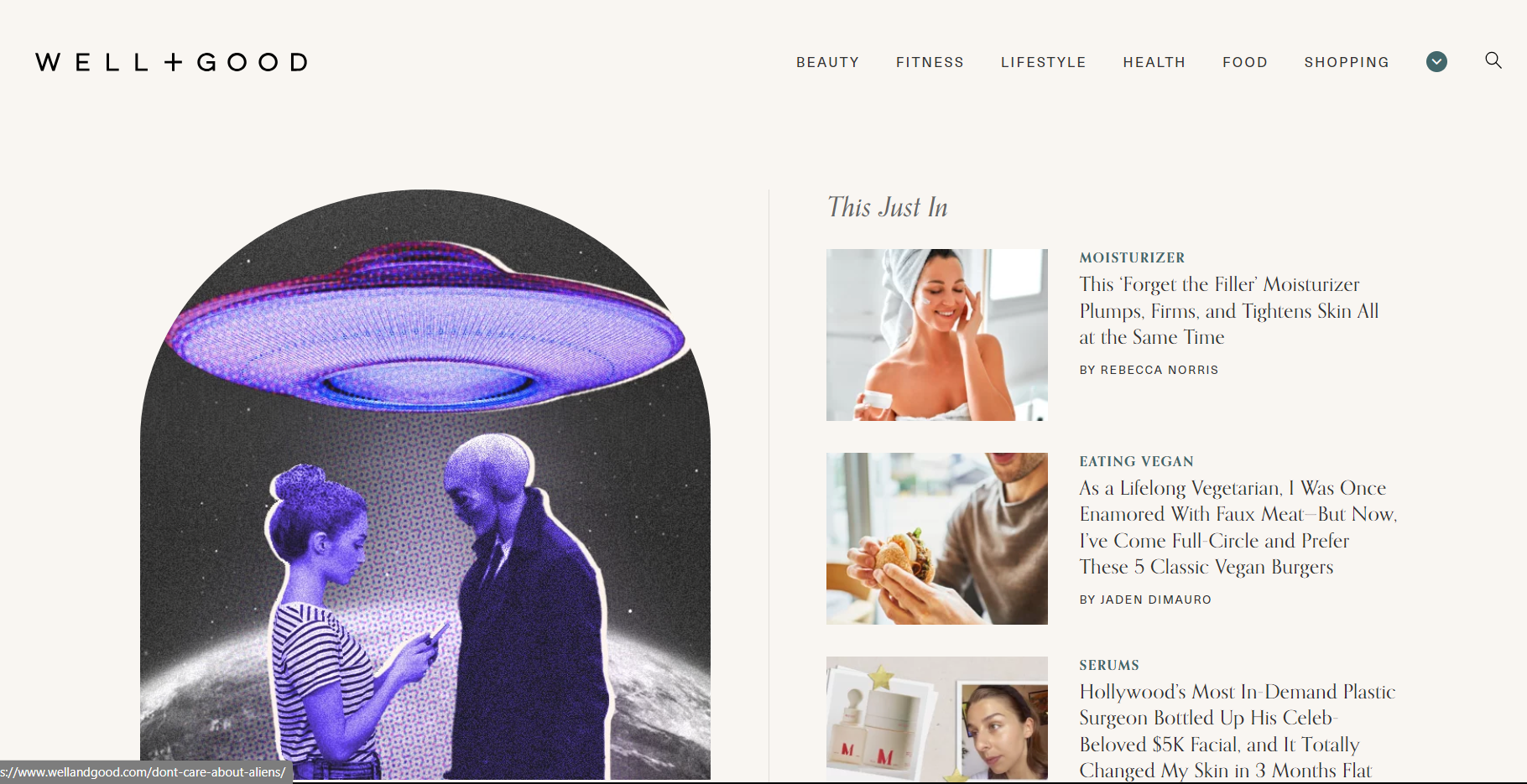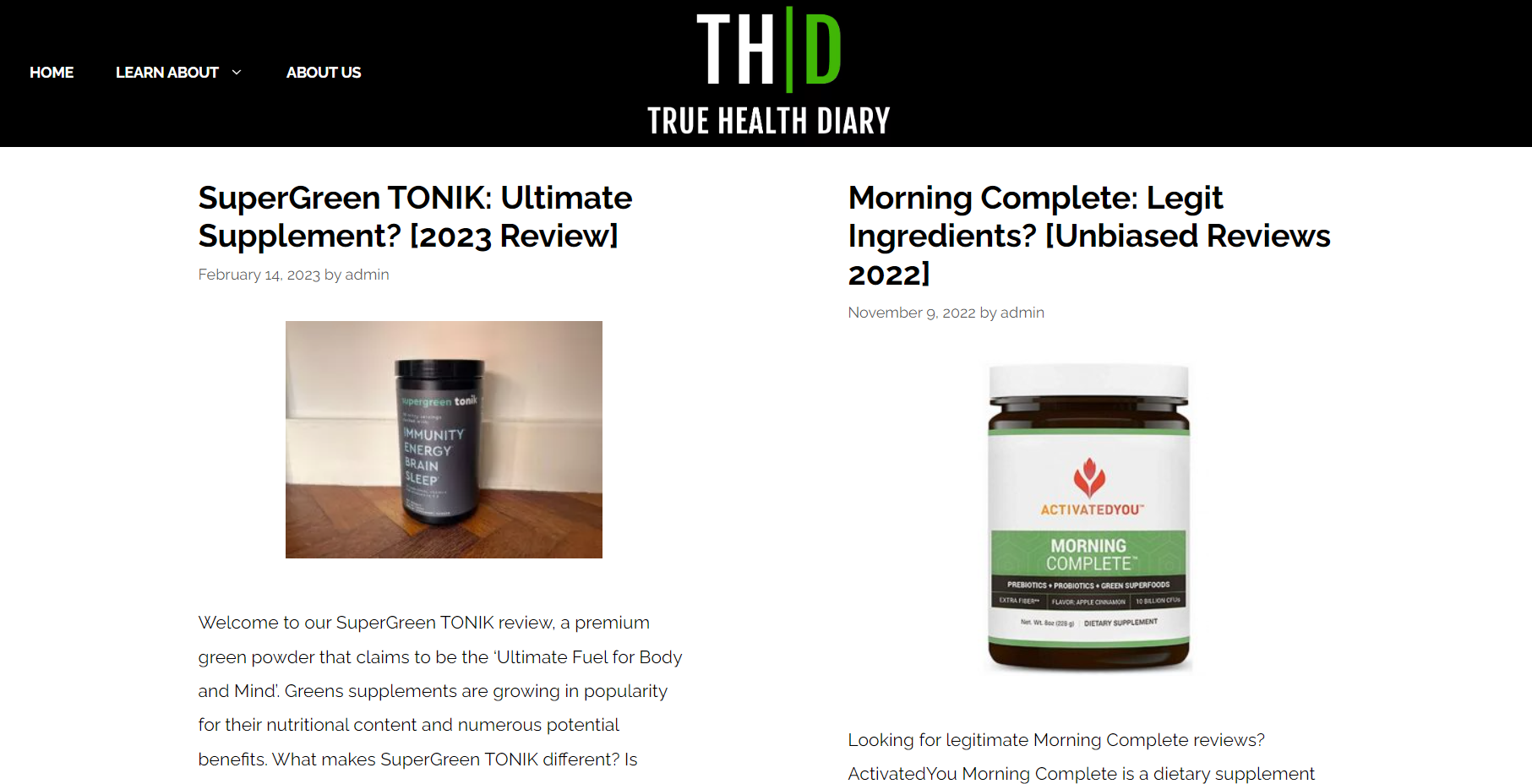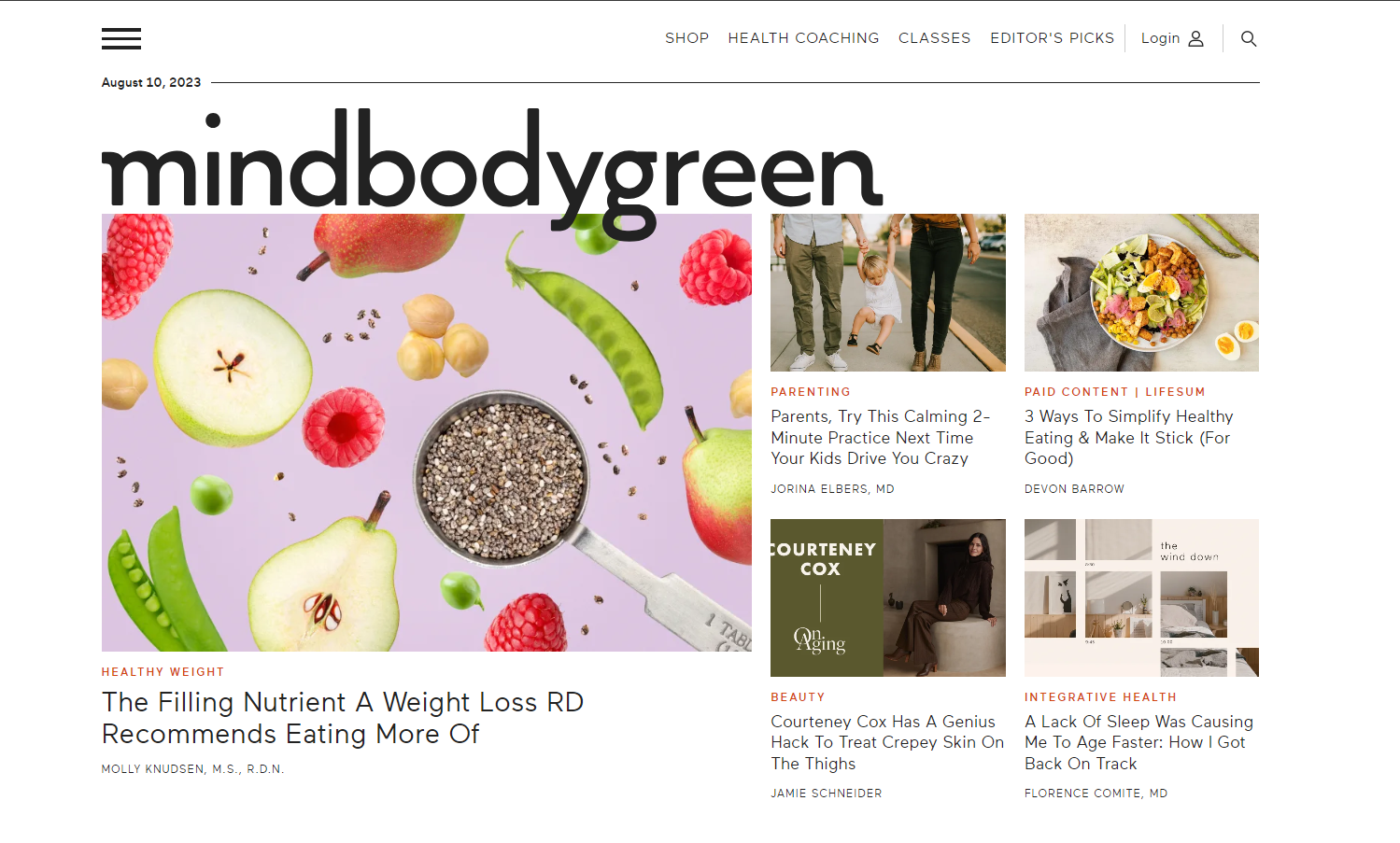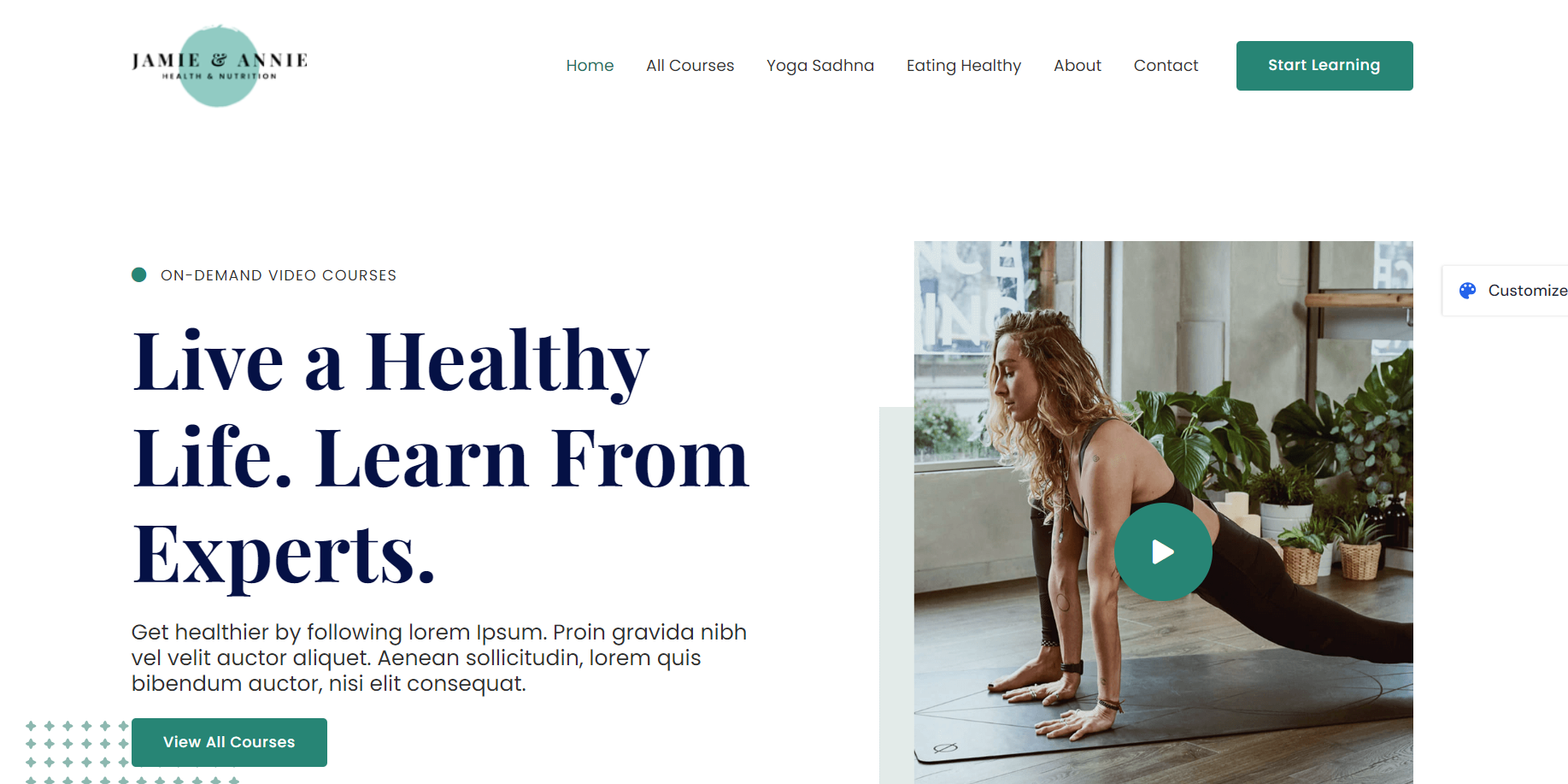Welcome to the world of health blogging, where your passion for wellness and your desire to make a positive impact come together in a meaningful way.
If you’ve ever thought about sharing your knowledge, experiences, and insights on health-related topics, you’re in for an exciting journey. Starting a health blog can be a fulfilling endeavor that not only allows you to express yourself but also empowers others to take charge of their well-being.
In this comprehensive guide, I’ll walk you through the essential steps to launch your very own health blog. From choosing a compelling niche to crafting engaging content and building a dedicated audience, we’ve got you covered.
Whether you’re a seasoned health enthusiast or someone just starting to explore the wellness landscape, this guide will provide you with the tools and know-how to create a blog that resonates and makes a difference.
So, if you’re ready to take the plunge into the world of health blogging and share your passion for a healthier lifestyle, let’s dive in and uncover the secrets to starting a successful health blog that leaves a positive mark on the lives of your readers.
Key Takeaways
- Finding a specific area within health and wellness that resonates with your expertise and passion is crucial.
- Creating a strong online presence involves more than just writing compelling content. Utilizing social media, networking with others in the industry, and employing email marketing strategies can significantly boost the visibility of your blog.
- Implementing effective SEO strategies, such as conducting keyword research, using relevant keywords in content, optimizing blog posts, utilizing internal linking, and monitoring performance using tools like Google Analytics, is vital for increasing visibility and attracting more readers.
- Diversifying revenue streams can help turn your passion into a profitable venture. There are various ways to monetize a health blog, including display ads, affiliate marketing, selling digital or physical products, and offering services like coaching or consultations.
- Consistently delivering valuable, informative, and engaging content to your audience while maintaining interaction through comments, social media, and other platforms is key to building a dedicated readership and fostering a sense of community around your blog.
What is a Health and Wellness Blog?
Starting a health and wellness blog can be a great way to share your knowledge and experiences with others who are interested in living a healthier lifestyle. But before you start, it’s important to understand what health and wellness blogging is all about as well as how you can start a blog that can make money.

A health and wellness blog is a platform where you can share information about various health and wellness topics, such as fitness, nutrition, mental health, and lifestyle. As a health and wellness blogger, your goal is to provide your readers with well-researched, informative, and engaging content that can help them make positive changes in their lives.
In the health and wellness space, there are many different types of bloggers, including wellness professionals, fitness enthusiasts, nutritionists, and more. However, what sets successful health and wellness bloggers apart is their ability to write in an authentic voice that resonates with their readers.
To be a successful health and wellness blogger, it’s important to have a deep understanding of the topics you are writing about. You should be well-informed about the latest research, trends, and best practices in the wellness space. This means spending a significant amount of time researching your topics before you start writing.
In addition to being knowledgeable, successful wellness bloggers also have a strong sense of empathy and are able to connect with their readers on a personal level. They are able to share their own experiences and struggles with their readers, which makes their content more relatable and engaging.
Overall, starting a wellness blog can be a rewarding experience that allows you to share your passion for health and wellness with others. Just remember to stay informed, authentic, and empathetic, and you’ll be well on your way to building a successful wellness blog.
Examples of Health and wellness blogs
Well+Good
This influential blog is a treasure trove of knowledge, addressing an extensive spectrum of topics that encompass fitness, nutrition, mindfulness, beauty, and lifestyle.

Whether you’re seeking practical guidance to fine-tune your exercise routine, explore nutritious culinary creations, or delve into the realms of mindfulness, Well+Good delivers expert advice and actionable tips.
The blog’s compelling blend of expert insights and relatable content serves as a guiding light, helping readers forge a path toward a more balanced and healthier lifestyle. With a mission to empower and inspire, Well+Good’s inspiring stories and expert perspectives are designed to uplift and guide readers on their wellness journey.
TrueHealthDiary
TrueHealthDiary is a dedicated health and wellness blog that offers a holistic approach to well-being. It covers a diverse range of topics, from nutritious recipe reviews and fitness tips to mindfulness practices and stress management techniques.

With a commitment to providing authentic and actionable advice, TrueHealthDiary guides readers on a journey to achieve true health and a balanced lifestyle. This insightful platform caters to real-life scenarios, ensuring that readers can seamlessly integrate health-conscious choices into their daily routines.
Whether you’re seeking guidance on creating well-balanced meal plans, understanding the benefits of various exercise routines, or learning to incorporate mindfulness into your daily routine, TrueHealthDiary provides practical insights that resonate with your everyday life.
MindBodyGreen
MindBodyGreen is a holistic haven for those seeking comprehensive well-being insights. This comprehensive platform goes beyond the surface, delving into the intricacies of personal growth, mindfulness, and overall wellness.

Through its collection of articles, podcasts, and resources, MindBodyGreen provides readers with the tools to nurture their mental, physical, and emotional health. Whether you’re looking to unlock the benefits of mindful living, cultivate a positive mindset, or explore nourishing practices, this platform offers a rich tapestry of guidance.
MindBodyGreen’s commitment to empowering readers with knowledge and fostering a sense of connection creates a nurturing space where individuals can embark on a transformative journey to enhance their overall well-being.
How to start a health blog
If these examples have piqued your curiosity and ignited your passion for health and wellness, I’m here to guide you through the steps of launching your very own health blog without necessarily breaking the bank.
I’ll begin by helping you select a niche that resonates with your expertise and aligns with your unique perspective.

From there, we’ll delve into the intricacies of setting up your blog, crafting engaging content, and connecting with your audience.
So, if you’re ready to embark on a journey that combines your love for well-being with the power of digital expression, let’s dive into the exciting process of starting your own blog!
Finding your Niche
Finding your niche in the health and wellness space is a crucial step. It involves exploring various health topics, and then narrowing down to one that resonates with you most. For example, if you’re passionate about plant-based diets or mental well-being, these could be your unique angles for starting a health blog.
Having a specific area of expertise not only helps to center your content but also makes it easier for your target audience to find and follow you.

Setting clear goals for your blog can help drive its growth and success. Whether it’s giving health tips to your readers or sharing personal anecdotes from your own journey into wellness, set definitive objectives that align with both personal motivation and public demand.
Should your ambition involve writing medical blogs on behalf of industry or pharmaceutical companies, it’s worth noting that some employers may specifically seek candidates with a PhD for such roles.
Some popular niches for health blogs include:
- Nutrition and healthy eating
- Fitness and exercise
- Mental health and wellness
- Natural remedies and alternative medicine
This combination will fuel meaningful content creation while boosting engagement among readers who share similar interests in the health and wellness spectrum.
Choosing a domain name
Choosing a domain name is a critical step in starting your health blog. It’s the online address that readers key into their browsers to access your site. Make sure it’s unique, memorable, and aligns with the brand you’re planning to build.
You can use keyword phrases related to health and wellness for better visibility on search engines.
The process of choosing involves brainstorming relevant names, checking availability, and registering your chosen name with an official registrar like GoDaddy or Namecheap. Domain names should be short, easy to spell, and indicative of what your blog content offers.
The right domain name gives credibility to your platform in the overcrowded world of blogs while strengthening your presence in the health and wellness space.
Selecting a Blogging Platform
There are many different blogging platforms available, each with its own strengths and weaknesses. Some popular options include WordPress, Blogger, and Tumblr. When selecting a platform, consider factors such as ease of use, customization options, and the ability to monetize your blog.
WordPress
Creating a health blog on WordPress is a popular choice for many aspiring poets. With its user-friendly interface and customizable features, WordPress makes it easy to get your blog up and running.
It is also a great choice if you plan to monetize your blog, as it offers a variety of advertising options and integrates easily with e-commerce platforms.
You can choose from a variety of free themes or opt for premium ones that offer more customization options. Additionally, WordPress offers plugins that can enhance the functionality of your blog, such as SEO optimization tools or social media sharing buttons.
Select a hosting provider
Choosing the right hosting provider is a vital step in your health blog journey. The host ensures your site stays live and reachable by your audience at any time. Various hosting providers offer different plans, so finding one that suits your needs and budget is crucial.
Some popular choices in the industry include Bluehost, Siteground, and InMotion Hosting due to their excellent customer service and impressive uptime statistics. This decision impacts not only the performance of your blog but also influences search results as Google favors sites with faster load times.
So assess each hosting plan carefully before making a choice for launching a successful health blog today.
Selecting a health blog theme
Choosing the right theme for your health blog is important to create a visually appealing and user-friendly website. Look for themes that align with your niche and convey a clean, professional look.

Consider options that offer customizable features like color schemes, layouts, and typography. A well-designed theme can help attract readers and make it easier to showcase your content effectively.
I highly recommend Astra a popular WordPress multipurpose theme for any kind of website.
Remember to ensure that the theme is responsive, meaning it looks good on different devices such as smartphones and tablets. Take into account factors like loading speed and search engine optimization (SEO) compatibility while selecting a health blog theme – these aspects play a crucial role in attracting visitors and increasing visibility on search engines like Google.
Creating Content For Your Health Blog
Now you’re ready to write your first blog post.
When it comes to writing blog posts for your health blog, it’s important to keep your audience engaged. Here are some tips to help you create engaging content that your readers will love:
Write Blog Posts That are Informative and Interesting
Your blog posts should be informative and interesting to your readers. You should write about topics that are relevant to your niche and that your readers will find interesting. You can also add personal anecdotes to your blog post to make it more relatable to your readers.
Use Formatting to Make Your Posts Easy to Read
Formatting is important when it comes to writing blog posts. You should use headings, bullet points, and bold text to make your posts easy to read. This will help your readers to quickly scan your posts and find the information they need.
How to Promote a Health Blog
Utilize social media, network with others in the industry, and share your content to build a strong online presence for your health blog.
Utilize social media
Promote your health blog and engage with a wider audience by utilizing social media platforms. Reach out to potential readers and fellow bloggers through platforms like Facebook, Instagram, and Twitter. Share your blog posts, wellness tips, and other helpful information to increase awareness of your brand.
Connect with your audience by responding to comments and messages, creating a sense of community around your blog. Collaborate with other bloggers in the health and wellness arena to expand your reach even further.
Network with others in the industry
Connecting and collaborating with fellow health bloggers and professionals in the health and wellness industry is crucial for the growth of your health blog. By networking, you can expand your reach, gain valuable insights, and build a supportive community.
Email Marketing
Email marketing is another effective way to promote your blog. Collect email addresses from your readers and send them newsletters with links to your latest blog posts. Be sure to make your emails visually appealing and include catchy subject lines to increase open rates.
Optimizing Your Blog for Search Engines
As a health blogger, one way to ensure the success of your health blog is by optimizing it for search engines. By doing so, you can increase your blog’s visibility and attract more readers. Here are some tips to help you optimize your blog for search engines:
Conduct Keyword Research
Keyword research is the process of finding the words and phrases that people are searching for in relation to your blog’s topic. By using these keywords in your blog posts, you can increase your chances of ranking higher in search engine results pages (SERPs).
To conduct keyword research, you can use tools like Semrush’s Keyword Magic Tool or Google’s Keyword Planner. These tools will help you identify relevant keywords and show you how competitive they are.
Use Relevant Keywords
Once you have identified your target keywords, you need to use them in your blog posts. However, it’s important to use them in a natural and relevant way. Keyword stuffing (using too many keywords in a post) can actually hurt your blog’s ranking.
Make sure your keywords are included in your blog post’s title, meta description, and throughout the content. Use variations of your keywords as well to make your content more diverse.
Optimize Your Content
In addition to using relevant keywords, you should also optimize your blog content in other ways. This includes:
- Writing high-quality, informative content that provides value to your readers
- Using headings and subheadings to break up your content and make it easier to read
- Incorporating images and videos to make your content more engaging
- Linking to other relevant content on your blog and external sources
By optimizing your content in these ways, you can improve your blog’s overall user experience and increase your chances of ranking higher in SERPs.
Utilize internal linking
Internal linking is an effective way to enhance the user experience and improve your blog’s SEO. By including links within your blog posts, you can guide readers to other relevant content on your site.
This not only keeps them engaged but also helps search engines understand the structure of your website. Here are some tips for utilizing internal linking on your health blog:
- Link to related articles or blog posts within your own site to provide additional information on a specific topic.
- Include anchor text that accurately describes the content of the linked page.
- Use descriptive and keyword-rich anchor text to optimize your internal links for search engines.
- Make sure the linked pages load quickly and provide valuable information to keep readers interested.
- Avoid overusing internal links, as this can be overwhelming for readers and affect the readability of your content.
By implementing these tips you’ll be well on your way to increasing your blog traffic!
Monitor Your Results
Finally, it’s important to monitor your blog’s performance in search engine results. Use tools like Google Analytics and Semrush to track your blog’s traffic, ranking, and other metrics.
By monitoring your results, you can identify areas for improvement and adjust your strategy accordingly. This will help you continue to optimize your blog for search engines and attract more readers over time.
How to Monetize Your Health Blog
To make money from your health blog, you can display ads, do affiliate marketing, sell products, or offer services. Discover how to effectively monetize your blog and turn your passion into a profitable venture.
Read on to learn more!
Display ads
Display ads are a popular way to monetize your health blog. By partnering with advertising networks, you can display targeted advertisements on your site and earn revenue when visitors click or view the ads.
These ads can be in the form of banners, pop-ups, or sidebar widgets. Utilizing display ads allows you to generate income while providing valuable content to your readers. It’s important to choose ad placements that don’t disrupt the user experience and align with your blog’s aesthetic.
With a well-designed strategy, display ads can be an effective tool for earning money from your health blog.
Affiliate marketing
Affiliate marketing is a great way to monetize your health blog and earn passive income. By partnering with companies or brands that align with your niche, you can promote their products or services on your blog.
When readers click on these affiliate links and make a purchase, you will earn a commission. It’s important to choose reputable partners and only promote products or services that you believe in and are relevant to your audience.
By incorporating affiliate marketing into your health blog strategy, you can generate income while providing valuable recommendations to your readers.
Sell digital or physical products
To further monetize your health blog, you can explore selling digital or physical products. This can include e-books, online courses, workout plans, meal plans, healthy recipe books, or even branded merchandise such as clothing and accessories.
Offer services
Offering services on your health blog is a great way to monetize your platform and provide additional value to your readers. Whether you are a certified nutritionist, personal trainer, or wellness coach, sharing your expertise through online consultations or coaching sessions can help establish you as an authority in the health and wellness space.
Conclusion
Starting a health blog can be an exciting journey towards sharing your knowledge and promoting a healthy lifestyle.
By identifying your goals, creating your brand, implementing SEO strategies, building your online presence, monetizing your blog, and maintaining consistency and engagement, you can create a successful health blog that provides valuable information to your audience.
So why wait? Start your health and wellness blog today!

